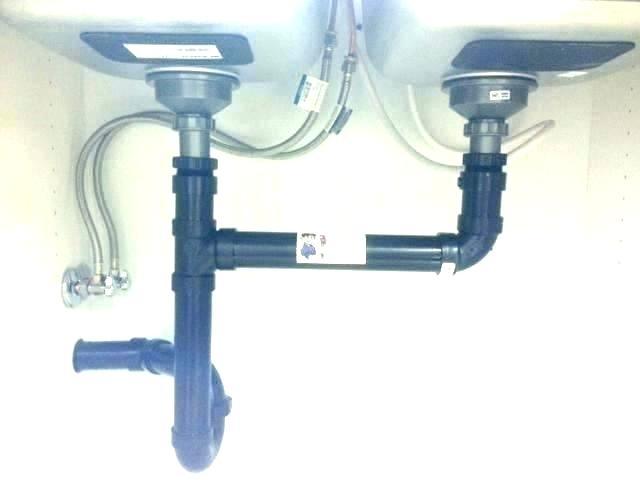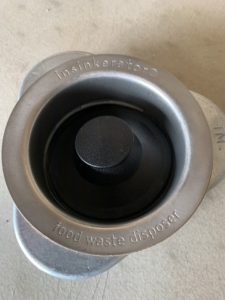Proven Solutions for Fixing a Dripping Garbage Disposal
Proven Solutions for Fixing a Dripping Garbage Disposal
Blog Article
We have stumbled upon the article relating to The Handy Guide To Fixing Your Garbage Disposal Leaking down the page on the net and think it made good sense to write about it with you here.

Garbage disposals are necessary cooking area home appliances that aid in disposing of food waste successfully. However, a dripping garbage disposal can be a discouraging and messy issue to manage. Thankfully, lots of leakages can be dealt with quickly with a couple of straightforward steps. In this article, we will certainly discuss how to fix a dripping waste disposal unit successfully.
Intro
Garbage disposals are installed under kitchen sinks and are developed to shred food waste into smaller items, enabling it to go through the pipes system easily. While these gadgets are generally trusted, leakages can happen in time because of damage, loosened links, or damage to the unit.
Typical Root Causes Of Leakages in Rubbish Disposals
Worn Seals and Gaskets
Seals and gaskets play an important function in protecting against water from leaking out of the garbage disposal. With time, these elements can wear away, bring about leaks around the disposal system.
Loose Links
The connections in between the waste disposal unit and the pipes system can become loose with time, creating water to leakage out throughout procedure.
Fractures or Openings in the Disposal Device
Physical damage to the garbage disposal, such as splits or openings in the housing, can additionally cause leakages.
Recognizing the Source of the Leakage
Before attempting to deal with a dripping garbage disposal, it is necessary to identify the resource of the leakage. This can normally be done via aesthetic assessment or by conducting straightforward examinations.
Visual Examination
Examine the waste disposal unit unit very carefully for any type of indicators of water leakage. Pay attention to locations around seals, gaskets, and link points.
Examining for Leakages
One means to check for leakages is by running water through the disposal system and looking for any kind of noticeable indicators of leakage.
Devices and Materials Needed for Repairing a Leaking Garbage Disposal
Prior to starting the repair procedure, gather the necessary devices and materials, consisting of a screwdriver, flexible wrench, plumbing professional's putty, substitute seals or gaskets, and epoxy or patching material for repairing splits or openings.
Step-by-Step Guide to Fixing a Dripping Garbage Disposal
Turn Off the Power
Before trying any type of repairs, make certain that the power to the garbage disposal device is switched off to avoid the danger of electric shock.
Situate the Leak
Identify the precise area of the leak and identify the cause.
Tighten up Connections
Use a wrench to tighten up any type of loose links between the disposal system and the pipes system.
Replace Seals or Gaskets
If the leak is because of used seals or gaskets, get rid of the old elements and change them with brand-new ones.
Patching Fractures or Openings
For fractures or holes in the disposal device, usage epoxy or a suitable patching product to seal the damaged area.
Examining the Waste Disposal Unit After Fixing
As soon as the fixing is complete, check the waste disposal unit by running water through it to make sure that the leak has been dealt with.
Preventive Maintenance Tips to Prevent Future Leaks
To stop future leakages, it is vital to carry out routine maintenance on your waste disposal unit. This includes maintaining it tidy, avoiding putting non-food items or difficult objects down the disposal, and regularly looking for leakages or various other problems.
Final thought
Finally, repairing a leaking garbage disposal is a fairly uncomplicated process that can be finished with basic devices and materials. By complying with the steps laid out in this short article and practicing preventative maintenance, you can keep your garbage disposal in good working condition and prevent costly repairs in the future.
What to Do About a Leaking Garbage Disposal
A leaking garbage disposal often goes unnoticed until you confront a sopping cabinet, a foul-smelling puddle, or an audible drip-drip-drip from the unit. The fix can be frustrating, too, because the leak can stem from a number of components in the system. Fortunately, with a little sleuthing, you can zero in on the leak and—depending on the exact location—stop the icky oozing and repair the component that caused it. Worst case scenario, if it turns out that the garbage disposal must be replaced, installing a new one is a reasonable do-it-yourself task for those with basic plumbing skills. Read on to keep the cash you’d otherwise hand over to a pro.
Prepare to find the leak
Prior to testing the garbage disposal for leaks, unplug it at the wall outlet and turn off the power from the breaker box to prevent electrical shock. Then insert a watertight sink stopper into your sink drain and wipe the unit dry with a clean cloth. In any handy container, mix a few drops of food coloring into a few cups of water, and pour the dyed water onto the sink stopper to help you locate the leak.
Investigate the source
the top, where the disposal meets the sink drain the side, where the dishwasher hose or main drain pipe connects to the disposal or the bottom of the unit Inspect each of these locations while gliding a light-colored rag over the unit; the dyed water will readily show on the rag and reveal the location of the leak. If a leak isn’t immediately apparent, remove the sink stopper and pour a few more cups of dyed water down the sink drain, then check for leaks again. Leaks near the top of the unit are more likely to show themselves while the sink is plugged, while side and bottom leaks are more noticeable while the sink is unplugged.
The metal sink flange that sits directly inside the sink drain is typically sealed around the top with plumber’s putty (a clay-like sealant) and then secured from under the sink with bolts. If the plumber’s putty deteriorates, or the bolts loosen, the flange can no longer form a watertight seal between the sink drain and the disposal—which could cause a leak at the top of the unit.
To reseal the leaky flange, you must first detach the garbage disposal. Start by loosening the screws securing the main drain pipe to the disposal, then loosen the screws in the metal clamp securing the dishwasher hose to the disposal and detach the drain pipe and dishwasher hose from the disposal. Loosen the screws in the mounting ring that connects the disposal to the metal mounting assembly beneath the sink, then pull down the disposal and carefully set it on a clean, dry surface. Loosen the bolts in the mounting assembly with a wrench, then pull down the mounting assembly and set it near the disposal.

As a serious reader on Tips on Fixing a Leaking Garbage Disposal, I figured sharing that article was really helpful. So long as you appreciated our blog posting please don't forget to pass it around. Many thanks for your time. Visit us again soon.
See Availability Report this page